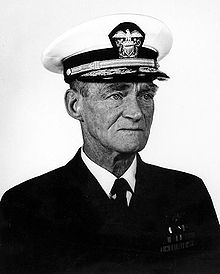The Battle of The Philippine Sea
On June 15th, 1944, the new Commander of the Japanese Combined Fleet, Admiral Soemu Toyoda, green lighted Operation A-Go. This was the perhaps the last roll of the dice for the Imperial Japanese Navy, since failure meant their ability to conduct large scale carrier ops in the Pacific would be at an end.
On June 19th, the Japanese Navy launched their aerial fleet of 440 fighters, dive-bombers and torpedo planes into an all-out assault against the more than 900 planes of the air arm of the U.S. Navy’s Fifth Fleet, which was supporting the U.S. amphibious invasion of the Mariana Islands. Half of the U.S. planes were the Grumman F6F Hellcats, possibly the best fighter in the air at that time. It would the most lopsided air battle of the war —- a crushing blow from which the Japanese forces never recovered.
It was called a “turkey shoot” due to the disproportional loss ratio inflicted on the Japanese aircraft by U.S. Navy and Marine pilots and anti-aircraft fire.
Japan was hampered in the three-day battle by a severe shortage of qualified pilots. Japan’s pre-war pilot training had focused on turning out a relatively small number of highly qualified fliers. Most of those pilots were killed in the 1942 battles of the Coral Sea and Midway. Few Japanese pilots in “the Shoot” had no more than six months training, some as little as two months.
Vice Admiral Marc A. “Pete” Mitscher led U.S. Task Force 58. He was a “pilot’s admiral” having been a pilot since 1915. The pilots described the leathery weathered little man as looking like a “cherubic hickory nut.” The Task Force’s primary mission was the protection of the Saipan invasion forces.
Admiral Toyoda hoped to catch Task Force doing just that and trap it into a defensive protective position to offset 58’s numerical superiority. It would become a carrier-vs-carrier fight.
On day one, June 19th, radar on the USS Cabot picked up a flight of several hundred Japanese aircraft approaching from 100 miles out. General quarters sounded. Everything and everyone who could fly got into the air. Pilots of VF-31 scrambled and tangled with the approaching air armada.
At the end of the day, the score was 395 Japanese shot down with 20 U.S. losses. When all aircraft were recovered the Task Force set out to find the Japanese fleet, which was some 800 miles distant.
On the afternoon of Day two, June 20th, the Japanese fleet was located about 400 miles due west. Admiral Mitscher decided on a late evening raid rather than waiting for sunrise the next day. 204 aircraft would make the assault at 1600. Then, when all aircraft were aloft, the Task Force headed for the enemy fleet at full speed to close the gap for the returning planes.
At 1845 the U.S. planes made contact. Passing over the smaller ships in the Japanese fleet, they hammered the carriers and other larger ships. Admiral Jisaburo Ozawa, the Japanese Task Force commander, expected support from Mariana-based planes, but in a surprise attack by 200 Task Force 58 planes left the Japanese airfields strewn with the flaming wreckage of 154 planes.

On the way to the target, the fliers had a tailwind, which assisted them, but on the way home, headwinds made for greater fuel consumption.
The first group returned at 2030. The Task Force had been running dark since Japanese submarines were reported to be in the area. The pilots attempted to make landings in the dark. Many crashed on the deck, slowing down recovery. Mitscher realized that if he didn’t turn on the lights, most of the retuning planes would have to ditch in the sea in the dark. He ordered all of the carriers to turn on their lights and for the pilots to land on the first carrier they could. Some of the fliers reported to be down to their last three gallons of fuel.
Of the 204 aircraft launched, 70 had to ditch among the task force. All told, 80 planes were lost and 49 pilots and crew did not return, but many pilots and crew were rescued in the following days.
Mitscher’s brave decision to break the rules and turn on his lights in submarine infested waters was a huge gamble that paid off in saving pilot’s lives.
On day three, June 21st, due to the losses of planes that had to ditch the night before, all fighters would join the dive and torpedo bombers to finish off the Japanese fleet. It was discovered that the enemy was 100 miles further away than expected, so the fighters were loaded with auxiliary fuel tanks.
After an hour in the air, a flight of Japanese bombers was spotted approaching the U.S. fleet. They were engaged and shot down. A flight of enemy fighters were engaged, most of which were shot down; the survivors limped back to their carriers.
After three days of intense aerial combat, the Battle of the Philippine Sea was over.
The box score was 550-645 aircraft lost, three fleet carriers and two oilers sunk on the Japanese side. Task Force 58 lost 123 aircraft and one battleship was damaged.
One of the ironies of the battle was that the pilot that coined the expression “Turkey Shoot,” Lt. Commander Paul Buie, had not one victory to call his own.
***
Thanks to Jerry F., Seattle, Washington for this contribution.


